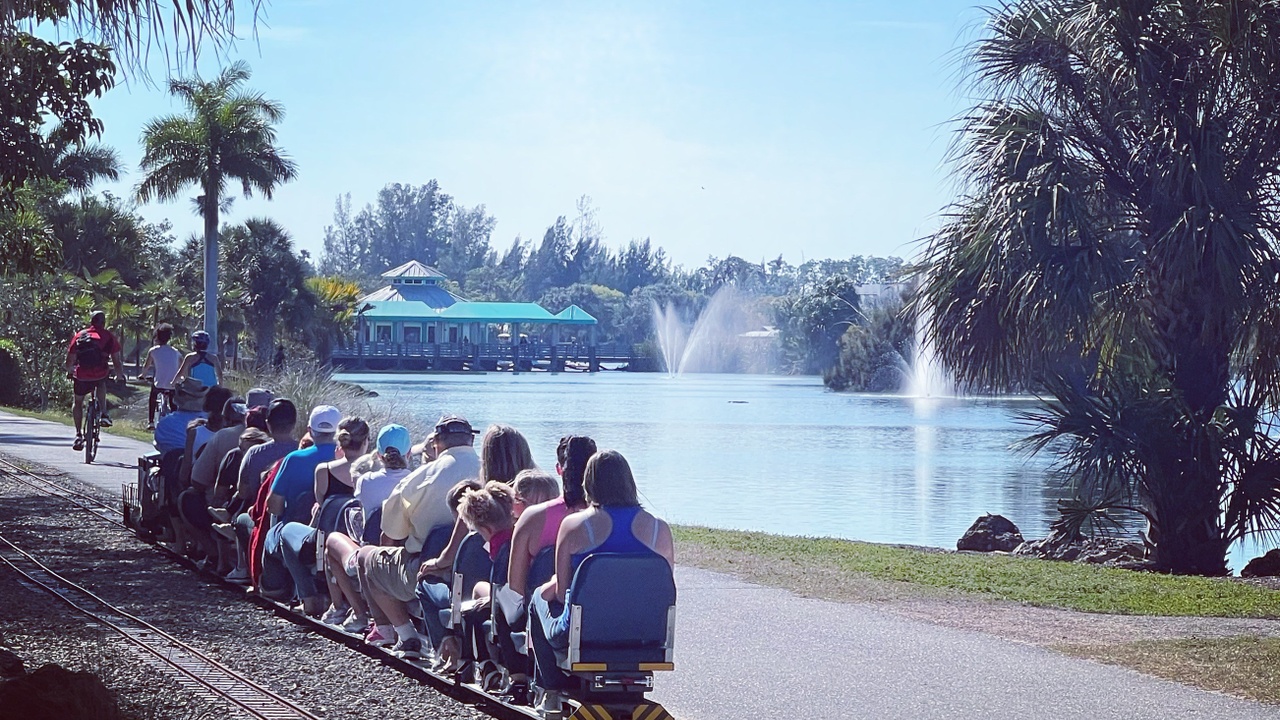Muscle Soreness Post Workout IS A Good Indication Of...

Biking by the Lakes Park train on a beautiful January 2022 day. Photo Courtesy of Charly Caldwell II
Muscle soreness post workout is clinically known as DOMS or Delayed Onset Muscle Soreness.
This muscle soreness is that distinctive aching, stiffness and tenderness that most of us experience after an unfamiliar or particularly taxing workout a day or two post exercising.
The textbook definition describes DOMS as being caused by eccentric exercise (controlled elongation), somewhat through isometric exercise (static) and not at all with concentric contractions (active shortening).
Speak English please?
This is much easier to understand if we consider the differences in running in biking.
RUNNING —
When we run, our body weight is unsupported and our feet strike the ground with each step.
In turn, the joints through the lower body; the back, pelvis, knees and ankles must absorb 6-10 times our bodyweight with each step before propelling us forward again.
Our leg muscles eccentrically load (muscles elongate under force with each step we take) which is why you may feel DOMS in your back, thighs, calves and gluteus muscles days later.
BIKING —
During a cycle or spinning workout, our bodies are supported by bikes and therefore our legs are only ever contracting concentrically (active shortening – we never fully extend the legs) as we push the pedals, never absorbing our body weight, significantly reducing the likelihood of DOMS in subsequent days.
DOMS results from a combination of unaccustomed muscle contraction and poor motor neuron recruitment.
In untrained individuals (or athletes who have taken a sabbatical from training), these two factors are prevalent and they usually experience the most severe cases of DOMS, even if the exercise is relatively mild in intensity.
Seasoned athletes who don’t vary their training stimulus regularly are likely to develop excellent motor neuron recruitment and become extremely accustomed to the specific stress applied.
This is the reason many experienced runners no longer experience DOMS even after vigorous training sessions.
Beginners experiencing DOMS should be wary, understanding that the intensity and duration of the DOMS usually reflects the stress you applied to your body. If too much stress is applied to an untrained body, there is only one outcome – injury.
If you are just beginning a training program, you will experience DOMS, however two or three days later you should feel energetic, pain free and ready to exercise again.
If you are nursing soreness for longer than 3 days, you may want to reduce your training load during your initial adaptation to training.
Experienced athletes should understand that they will not necessarily experience DOMS and that’s ok. This indicates a positive response to training load and is a good indication that your body is adapting accordingly.
Changing the training stimulus every 4-6 weeks however is very important, otherwise your body gets used to the training patterns, speed and movements and you can reach a plateau in performance.
If you enjoyed this blog post, you'll really enjoy our 14 DAY MINDSET CHALLENGE which is part of our Monthly Membership program helping & supporting you toward living your best life!
Our Geared Up theme for you is "Health, Wellness & Fitness in a Multi-Sport Lifestyle". Find out all of the ways we can support you through our Membership programs here.
Let's go on this journey together and change your life as always, “Practice with Purpose and Live with Passion!”
Angie

